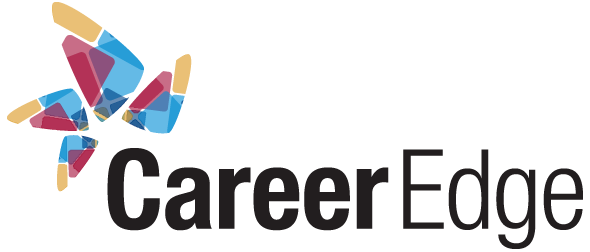The most recent edition of HR Professional magazine features “The Business Case for Creating an Inclusive Workplace”, in which Anne Lamont, President & CEO of Career Edge Organization, is interviewed among other business leaders committed to addressing the employment barriers faced by many persons with disabilities.
Throughout the article, Anne offers insights and guidance related to some of the myths and stereotypes associated with creating an inclusive workplace. Most notably, Anne encourages employers to focus on employees’ abilities rather than their disabilities, saying, “If you bring someone into a supportive environment, it demystifies the discussion around a disability.”
In today’s competitive business landscape, fostering an inclusive workplace isn’t just about checking a diversity box—it’s a strategic advantage that directly impacts your bottom line. Organizations with truly inclusive cultures are 6 times more likely to be innovative and 8 times more likely to achieve better business outcomes, according to research by Deloitte.
But what exactly makes a workplace genuinely inclusive, and how can you build teams where every employee feels valued, respected, and empowered to contribute their best work?
What Is an Inclusive Workplace?
An inclusive workplace goes beyond diversity metrics to create an environment where all employees feel welcomed, respected, and valued for their unique perspectives and contributions.
While diversity focuses on representation (having varied backgrounds, experiences, and identities in your workforce), inclusion is about creating a culture where everyone can participate fully and bring their authentic selves to work.
“Diversity is being invited to the party; inclusion is being asked to dance,” as diversity advocate Vernā Myers famously put it.
Why Building Inclusive Teams Should Be Your Priority
The benefits of creating inclusive teams extend throughout your organization:
- Enhanced innovation and problem-solving: Teams with diverse perspectives approach challenges from multiple angles, leading to more creative solutions
- Improved employee retention: People stay where they feel valued and included
- Stronger financial performance: Companies with inclusive cultures consistently outperform their less inclusive counterparts
- Broader talent attraction: Job seekers increasingly prioritize inclusive work environments
- Better employee engagement: Inclusive environments foster higher motivation and productivity
Sarah Chen, HR Director at Techlify Solutions, shares: “Since implementing our inclusion initiatives, we’ve seen a 34% reduction in turnover and a notable increase in innovative ideas coming from previously quieter team members. The ROI on inclusion work isn’t just cultural—it’s financial.”
Having witnessed many success stories from Career Edge Organization’s paid internship program, Anne says that in her experience, interns with self-declared disabilities have managed their disabilities exceptionally well and have a strong commitment to succeed with their employer of choice.
Strategies for Building Inclusive Teams
To leverage and support the hiring of persons with disabilities entering the workforce, Anne offers the following three tips to employers looking to create an accessible and inclusive recruitment process:
- Accessible job applications: Rather than accepting pen and paper job application forms, digital alternatives can be much more accessible to people with visual impairments or whose disability may limit their ability to use a pen or pencil.
- Create an environment for interview success: Interviews can be intimidating, especially for candidates that are also managing a disability. Providing interview questions in advance can support candidates in communicating their abilities, qualifications, and accomplishments.
- Focus on abilities: Be realistic in understanding if accommodations are required to support an employee’s abilities. This means: ensuring that job roles clearly set out responsibilities and outcomes, and being open to a respectful discussion with the candidate to determine what reasonable accommodation is required to achieve results.
Common Challenges and How to Overcome Them
Building inclusive teams isn’t without obstacles. Here are some common challenges and practical solutions:
Challenge: Resistance to Change
Solution: Focus on the business benefits while addressing individual concerns through open dialogue and involving skeptics in solution development.
Challenge: Measuring Inclusion Progress
Solution: Use a combination of qualitative and quantitative metrics, including engagement surveys, retention data, promotion rates, and employee feedback.
Challenge: Maintaining Momentum
Solution: Integrate inclusion into existing business processes rather than treating it as a separate initiative. Set periodic review points to evaluate and refresh your approach.
Get Started Today: Your Action Plan
Ready to build more inclusive teams? Here’s your starter action plan:
- Assess your current state: Conduct an inclusion audit through surveys, focus groups, or external consultants
- Set specific goals: Identify 2-3 priority areas based on your assessment
- Develop a clear roadmap: Create a timeline with specific actions, responsibilities, and metrics
- Get leadership buy-in: Secure explicit commitment and modeling from senior leaders
- Start with quick wins: Implement high-visibility changes that demonstrate your commitment
Conclusion: The Inclusive Advantage
Building inclusive teams is both the right thing to do and a strategic business advantage. By implementing these five strategies, you’ll create a workplace where all employees can thrive while positioning your organization for greater innovation, retention, and performance.
Remember that inclusion is a journey, not a destination. What matters most is your authentic commitment to continuous improvement and creating an environment where everyone feels they truly belong.
FAQ: Building Inclusive Teams
Q: How long does it take to build a truly inclusive workplace culture?
A: Cultural transformation typically takes 1-3 years for meaningful change, though you can achieve some quick wins within the first six months. The key is consistent effort and leadership commitment rather than viewing inclusion as a time-limited project.
Q: What’s the biggest mistake companies make when trying to create inclusive teams?
A: The most common mistake is focusing exclusively on diversity (representation) without addressing inclusion (how people experience the workplace). Another frequent pitfall is treating inclusion as an HR responsibility rather than integrating it into all aspects of the business.
Q: How can small businesses with limited resources implement inclusion strategies?
A: Small businesses can focus on no-cost or low-cost initiatives like reviewing hiring practices, establishing mentoring relationships, creating open feedback channels, and modeling inclusive leadership behaviors. The authenticity of your commitment matters more than your budget.
Q: How do remote and hybrid work environments affect inclusion efforts?
A: Virtual environments require intentional inclusion practices, including structured meeting facilitation that ensures all voices are heard, accessible technology, flexible scheduling, and creating opportunities for meaningful connection despite physical distance.
Q: What metrics should we track to measure inclusion progress?
A: Consider both quantitative measures (retention rates across demographics, promotion equity, pay equity) and qualitative indicators (belonging scores on engagement surveys, participation rates in meetings, employee feedback). The most important metrics will align with your specific inclusion goals.






